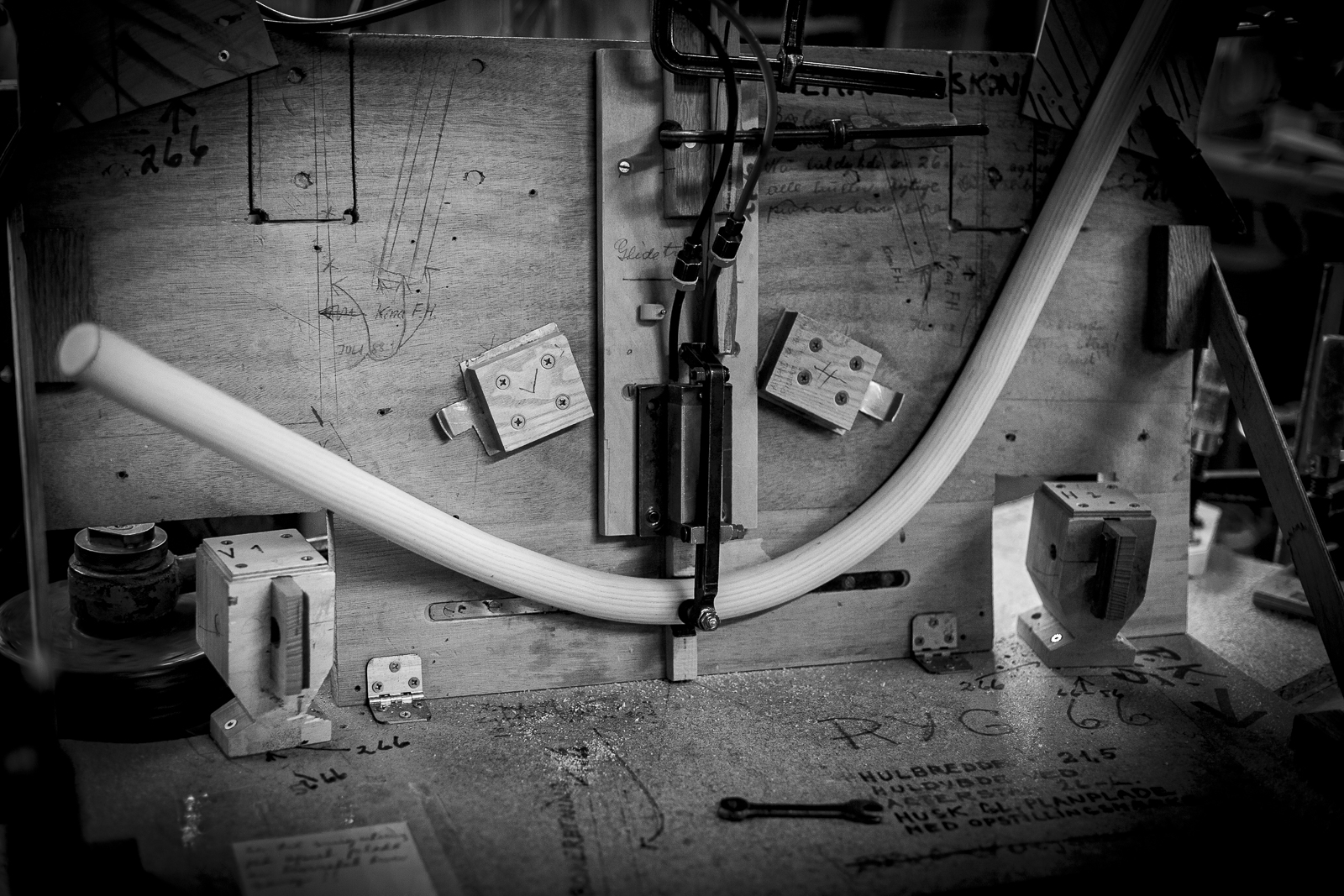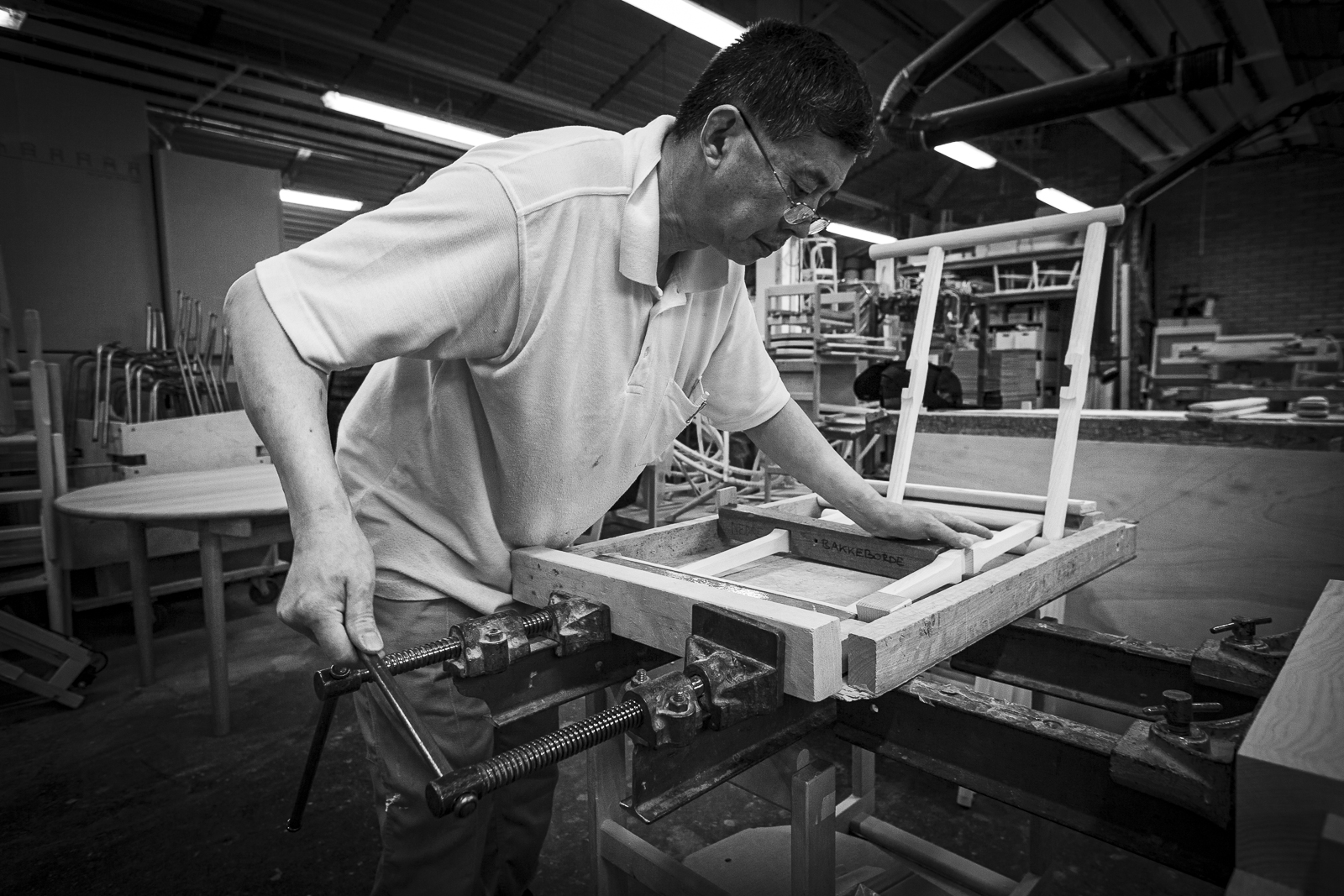
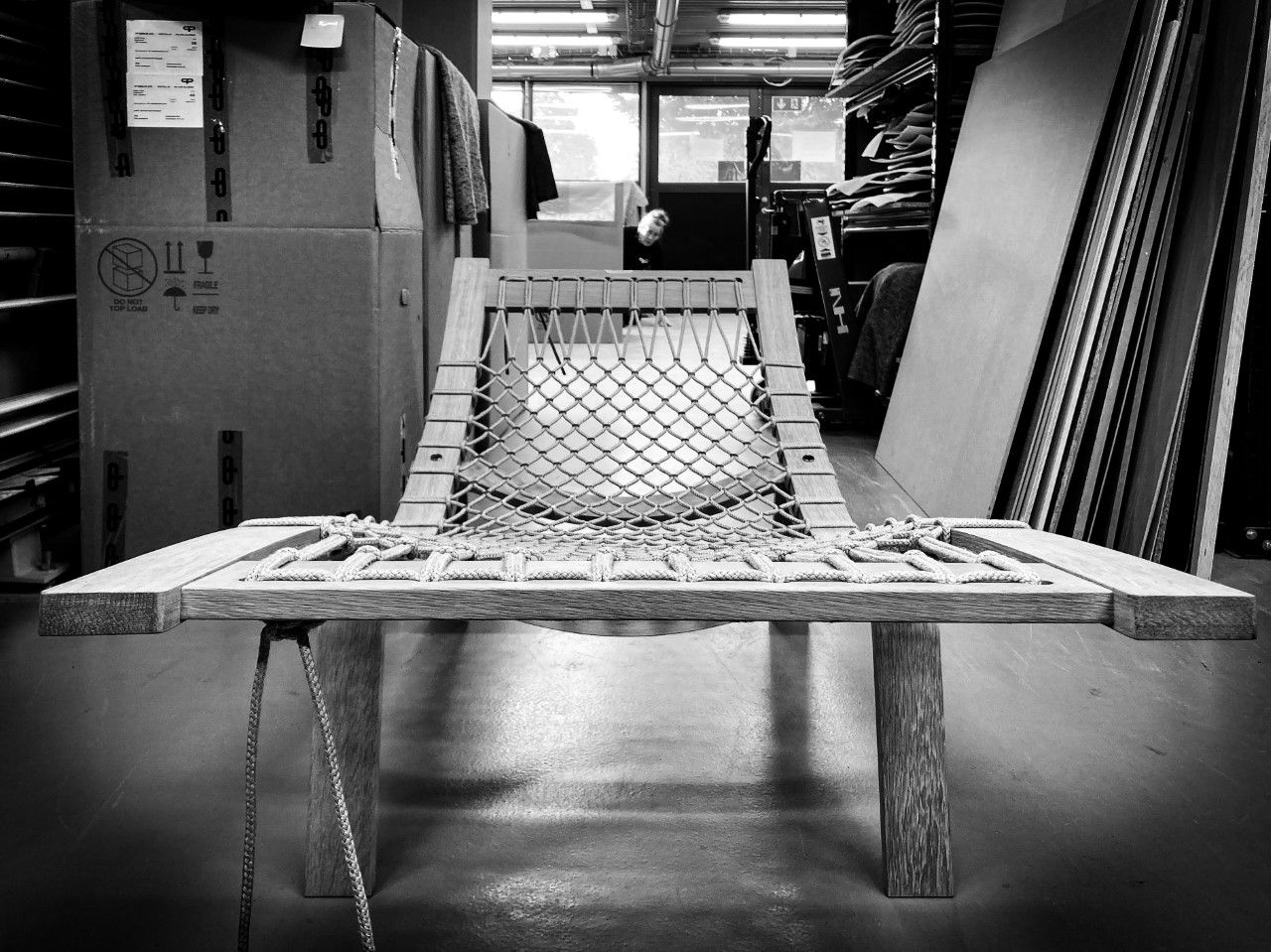
At PP møbler we specialize in wood furniture. Our furniture is crafted to last a lifetime, and the work that goes into creating each piece is thorough throughout all processes.
The wood has already lived about a hundred years or more, and from the moment we finish a chair, it proceeds living as part of someone’s life. Like a tree ages in the forest, the wood will mature over the years and reflect the environment and use that it is subjected to.
Eventually the appearance will change, and depending on the care and respect it is given, it will in return develop a beautiful patina.
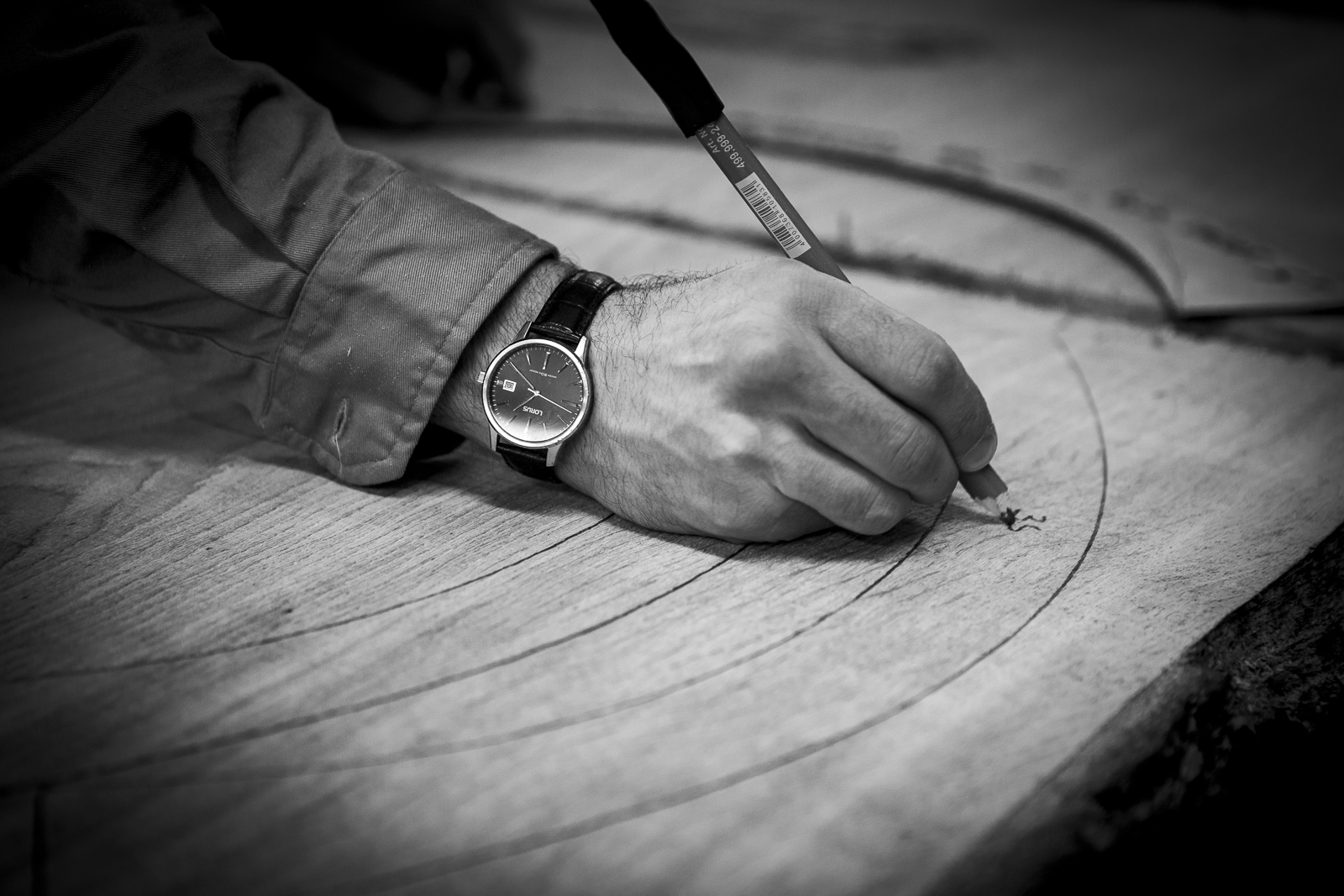
The tasks in our cabinet making are many and varied due to our extensive line of chairs and tables as well as frequent custom assignments. PP Møbler’s striving towards the highest possible level of quality makes working here a considerable professional challenge.
The cabinetmaker works from drawings and scale models provided by a designer. And, to a large extent, it is a highly successful cooperation between cabinetmaker and designer, which is the base of Danish furniture design’s international success.
The cabinetmaker’s work starts when a woodcutting machinist has performed the initiate carving of the individual items for a product. His/hers main tasks are the assembly of these pieces and the final precision touches. The cabinetmaker is also responsible for surface treatment.
The cabinetmaker’s work starts when a woodcutting machinist has performed the initiate carving of the individual items for a product. His/her main tasks are the assembly of these pieces and the final precision touches. The cabinetmaker is also responsible for surface treatment.
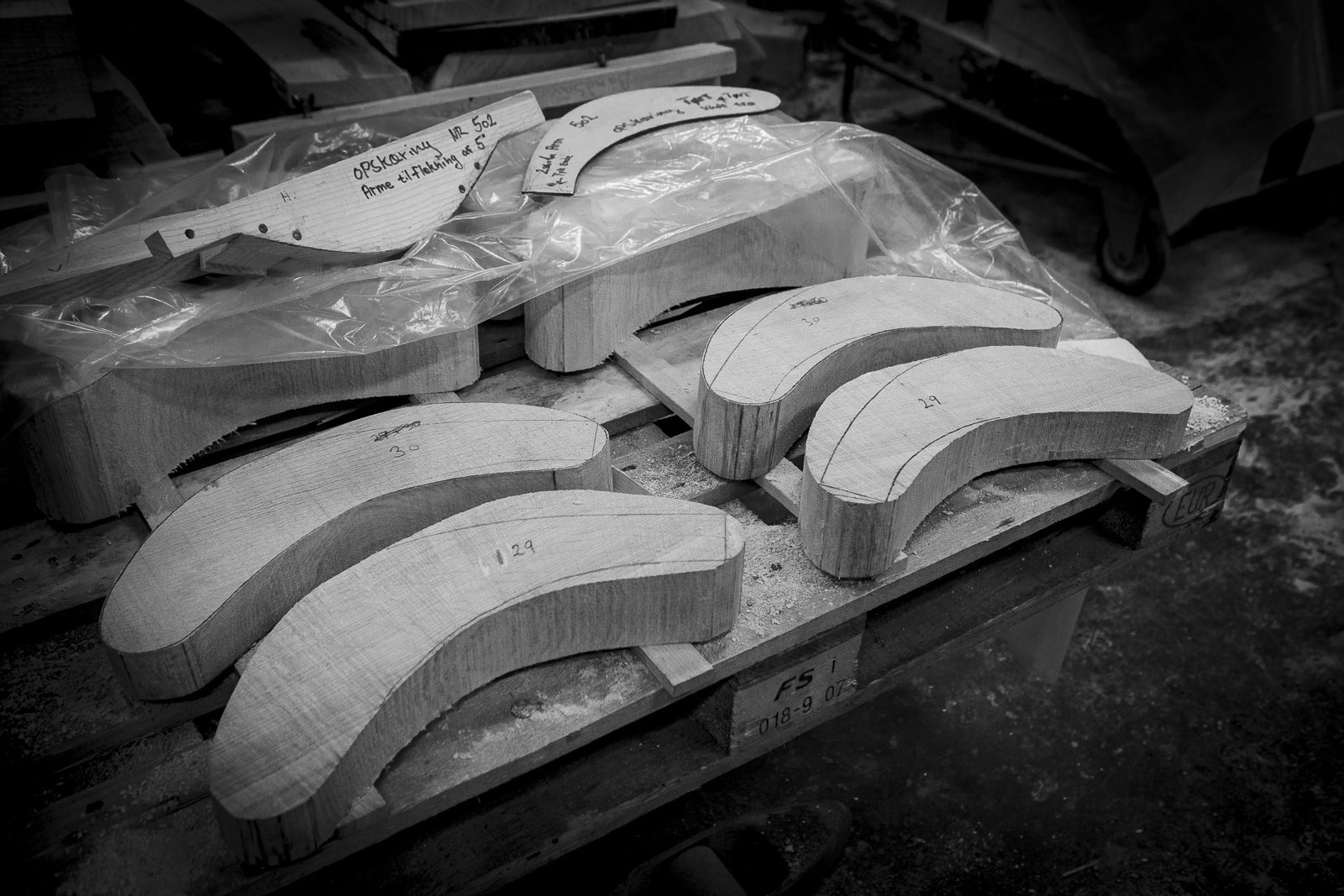
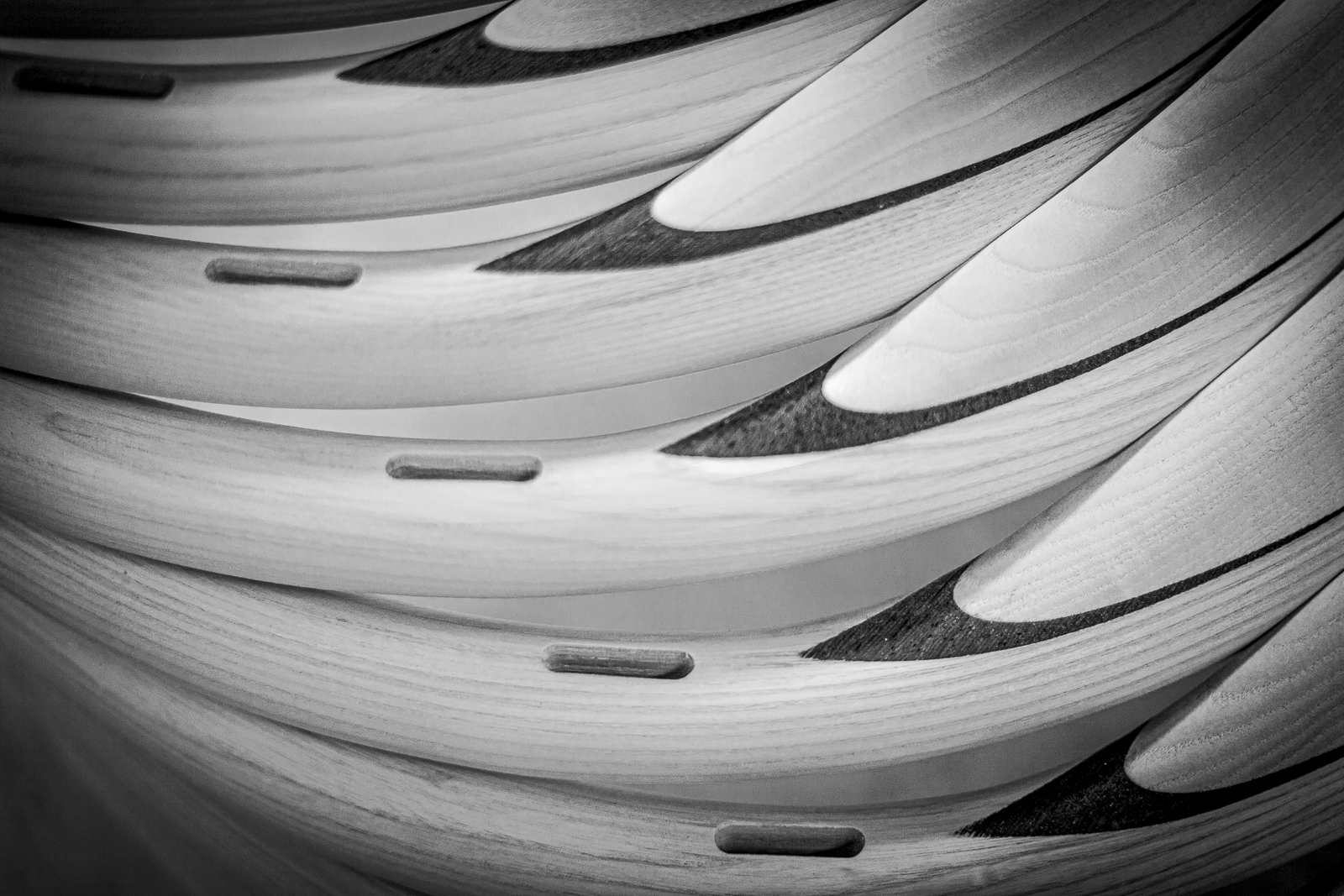
The complicated organic shapes of our products are impossible, or certainly unpractical, to finish by using machines alone. Machines will never be able to sense the subtle nuances in each piece of wood and how to bring vitality through its shape.
Technology and machinery are of enormous assistance to us but we still spend many hours of manual work in shaping. In this process the craftsmen have to be mindful of the concept behind the design because the final shape will always be an individual’s interpretation.
On the other hand the craftsman is obliged to read and adapt to the grain of each piece of wood in order to faithfully reach the intended shape with the desired smoothness.
A very important aspect when shaping is the continuous evaluation of ones progress, we depend to a great extent on our eyes, although our hands and fingers are much more important. Only with our hands we can sense the true result of our work.
Wood is a material with a will of its own and it is a lifelong education trying to fully understand it.
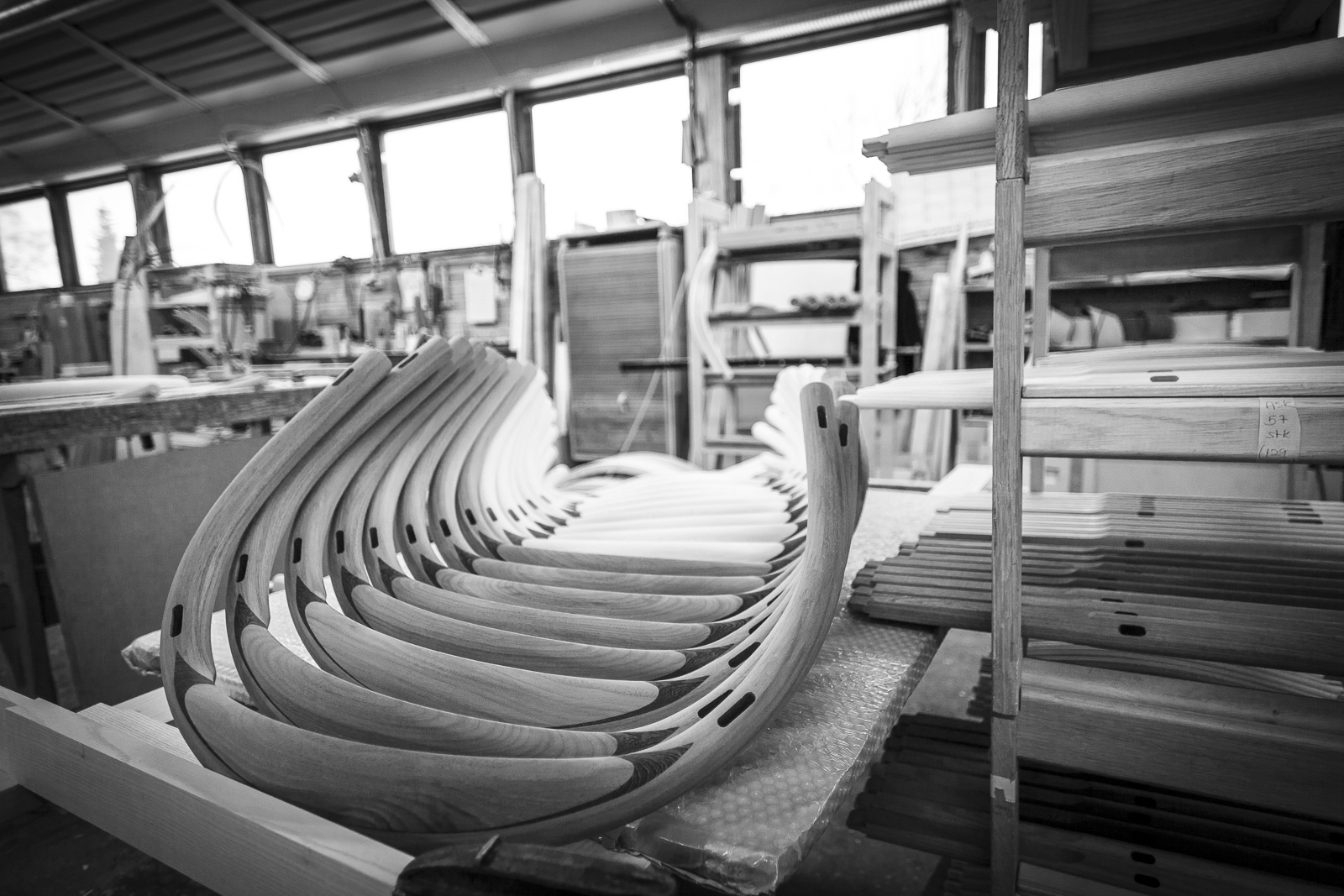
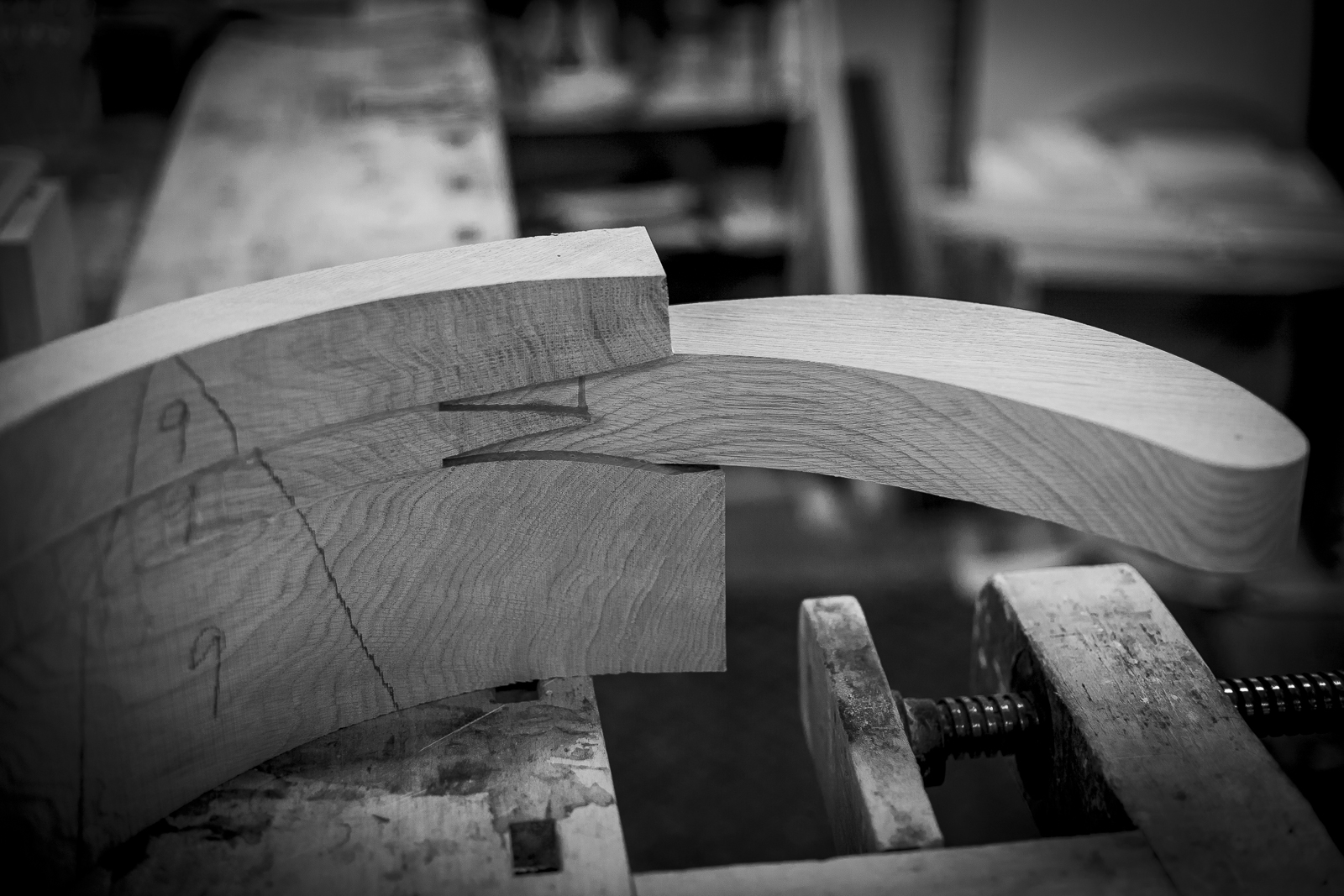
The joints are decisive to the longevity of a product and it is important to undertake extensive preparation in order to reach the most ideal conditions to join two pieces of wood.
Many of the joints made at PP Møbler are extremely complex and are based on idealism and a love for joinery and wood rather than simply the application.
Joints such as those on the back of the Round Chair are visible from many angles. This leaves no room for imperfection which is a daily challenge for our workshop.
Joining decides longevity. The slightest inaccuracy in the cut or in the way it is glued will result in a visible flaw. A good joint takes time and parts have to be cut with absolute accuracy. Some joints cannot be fully completed by machines alone and may need manual adjustment in order to gain their maximum strength.
The basic joint of the PP Møbler joinery is the tenon, often cut out of the part that it’s going to connect. Tenons are very strong because they have a high connecting surface along the direction of the wood grain. We have tested a large number of sample joints at a laboratory and found that a joint like the ones illustrated opposite can withstand about one ton of pulling strength.
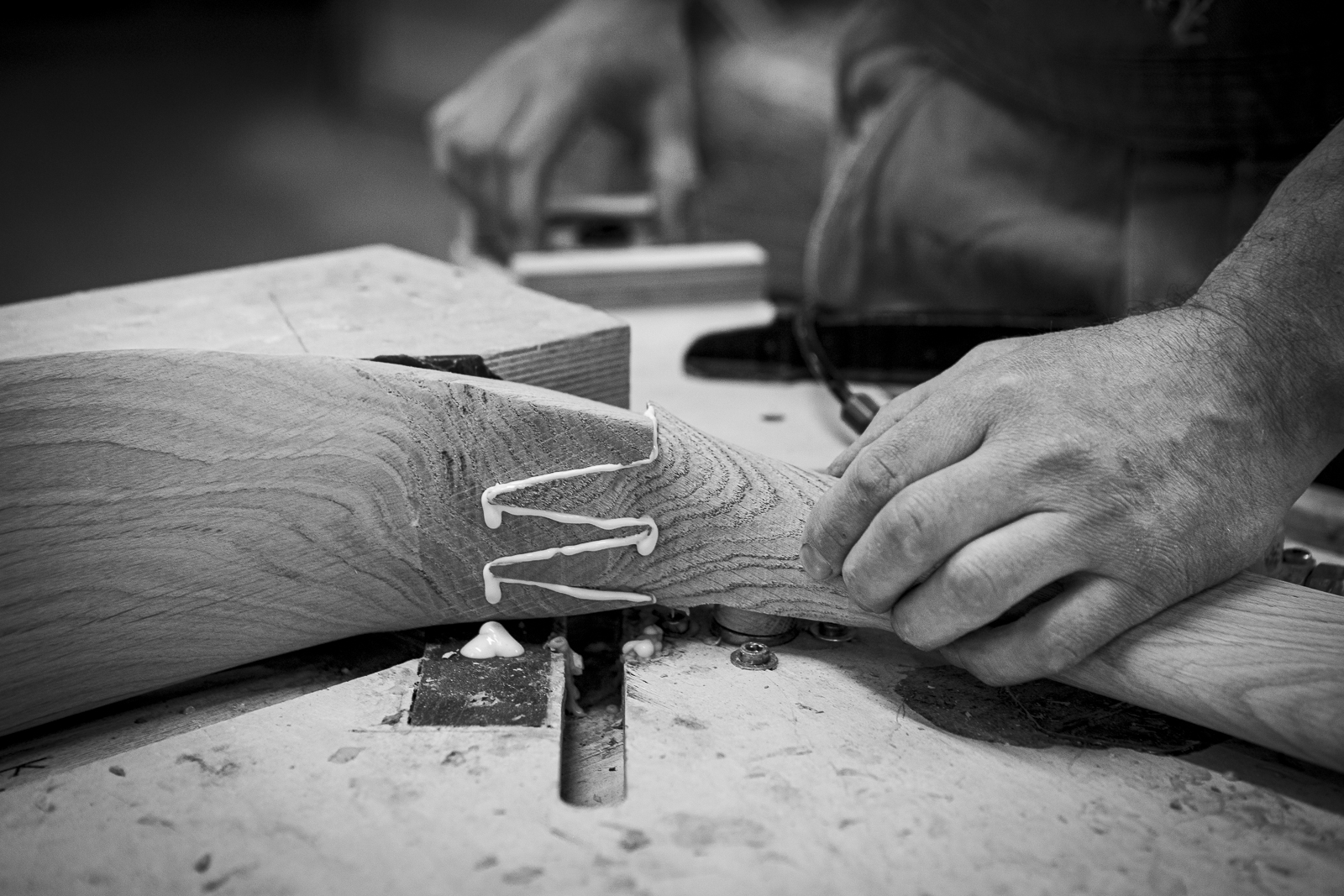
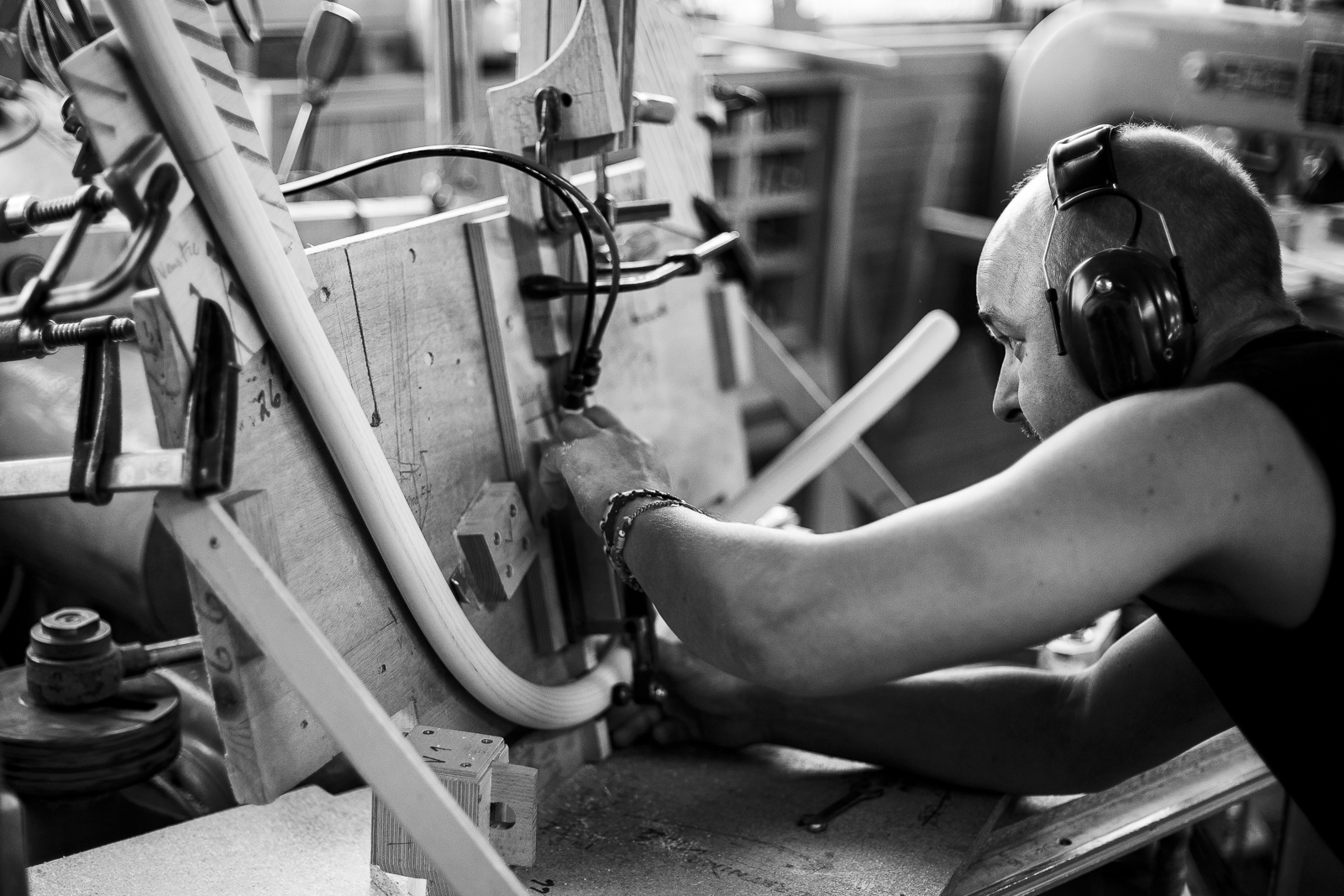
Steam-bending is an old technique which was originally used for making ships, but which is now also to a lesser extent used for making furniture.
The method consist of making the wood plastic (softening the wood) by exposing it to high temperatures and steam. While the wood is plastic it can be bent to the desired shape. Nevertheless, this presumes the fixation of the wood in a clamping mould. Subsequently, the wood is left to dry whereupon it can be removed from the mould. After this, the wood will keep the desired shape and will largely regain its original properties such as appearance, ultimate stress etc.
Steam-bending causes the wood’s cell walls on the inner side of the bend to be pressed together like a harmonica, while the outer layer maintains its original wood structure. The method is therefore limited depending on the thickness of the wood.
At PP Møbler, steam-bent parts enter several pieces of furniture – especially in top rails because the method preserves the wood properties; the wood still emerges as solid, the possibilities for joining and gluing are good. Steam-bending also preserves the original surface of the wood.
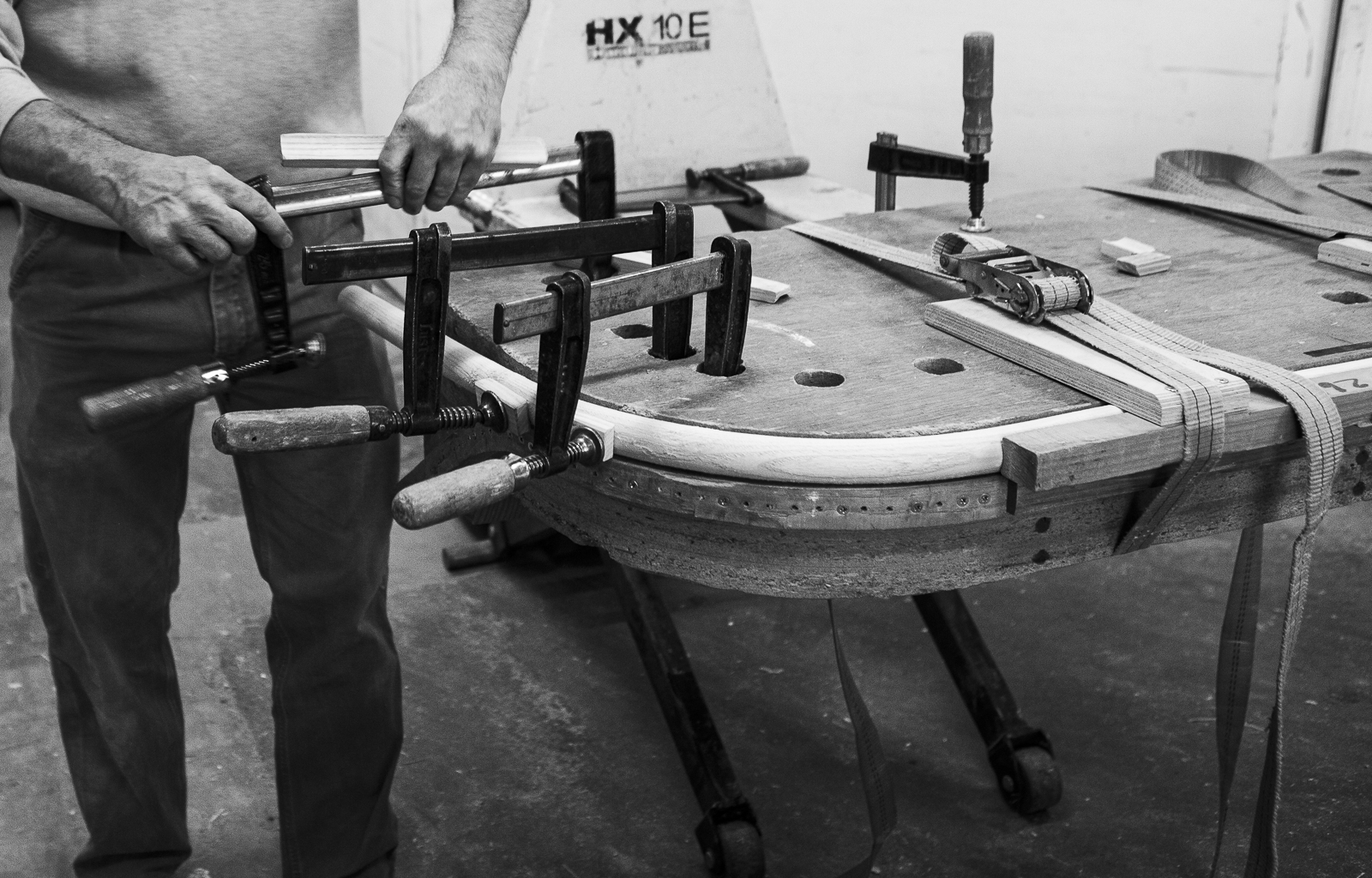
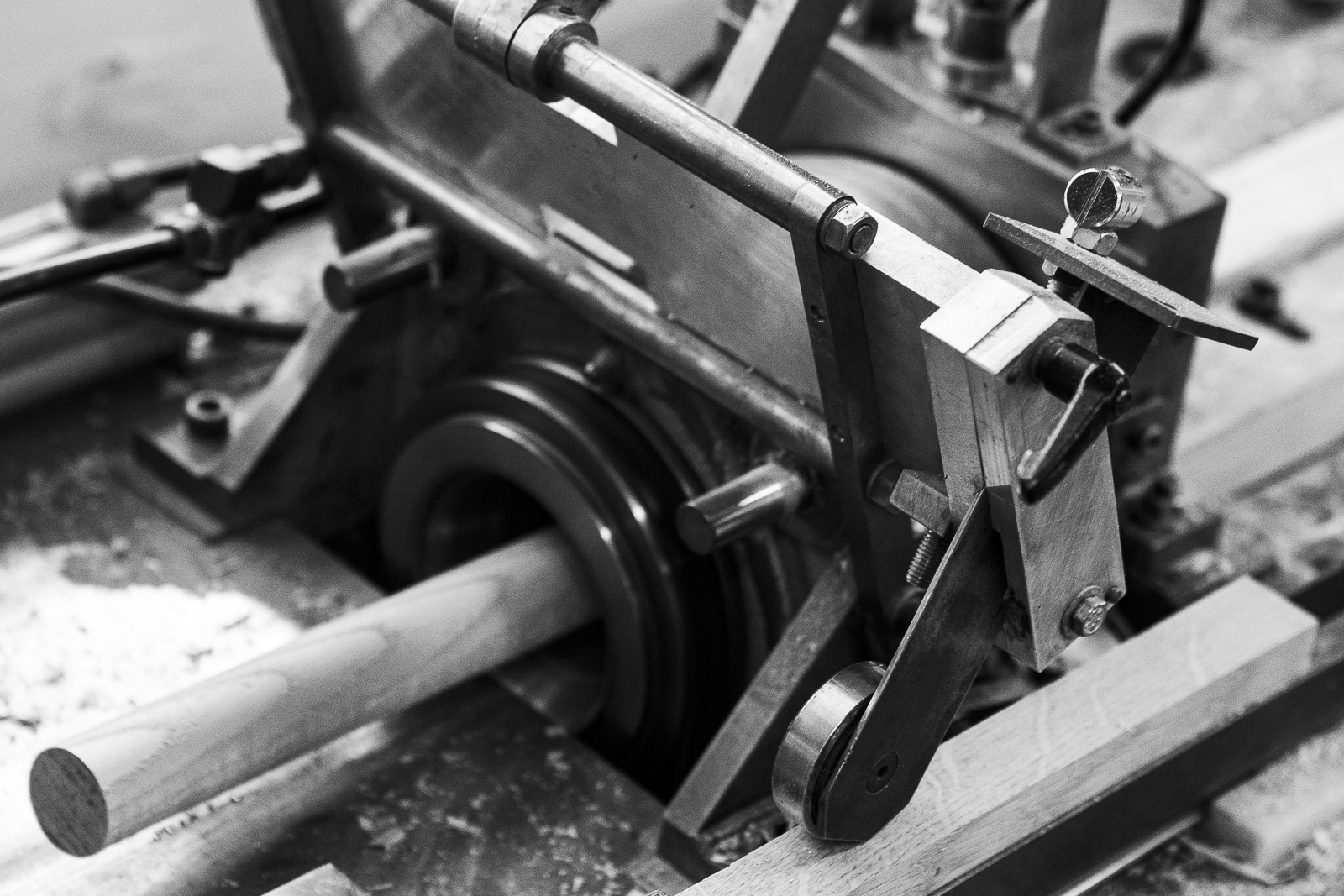
Precompressed wood has many advantages. If kept moist, it can be put in stock for up to six months before being shaped. The reason is that, unlike steam bent wood, precompressed wood does not need heat during the actual shaping. This also means that the vastage is very low and that it is much less costly. However, precompression can only be used on leef-bearing trees.
The technique has been known in England since the 1940’s, but was not developed for production until the Department of Wood at The Technological Institute of Denmark experimented with precompression in 1990 and 1991. The current manager of PP Møbler, Søren Holst Pedersen, participated in the research process, and in 1997 PP Møbler started working on a new prototype for PK 15 based on this new technique. Today precompressed wood is found in several models produced by PP Møbler.
Precompression is a new technique which gives the opportunity to work with very curved wooden items, making it highly interesting for cabinetmakers and designers.
Precompressed wood is made by heating moistened wooden items. While the wood is still hot, it is subjected to very high pressure from each end. This compresses the very cell structure making the wood very soft. Subsequently, the wood is dried whereby it will maintain its new shape.
As such, the method resembles the old technique of steam bending. However, the element of compression causes precompressed wood to become much more elastic than steam bent wood. If dropped from a tall building, a chair made exclusively of precompressed wood would probably act much like a football.
